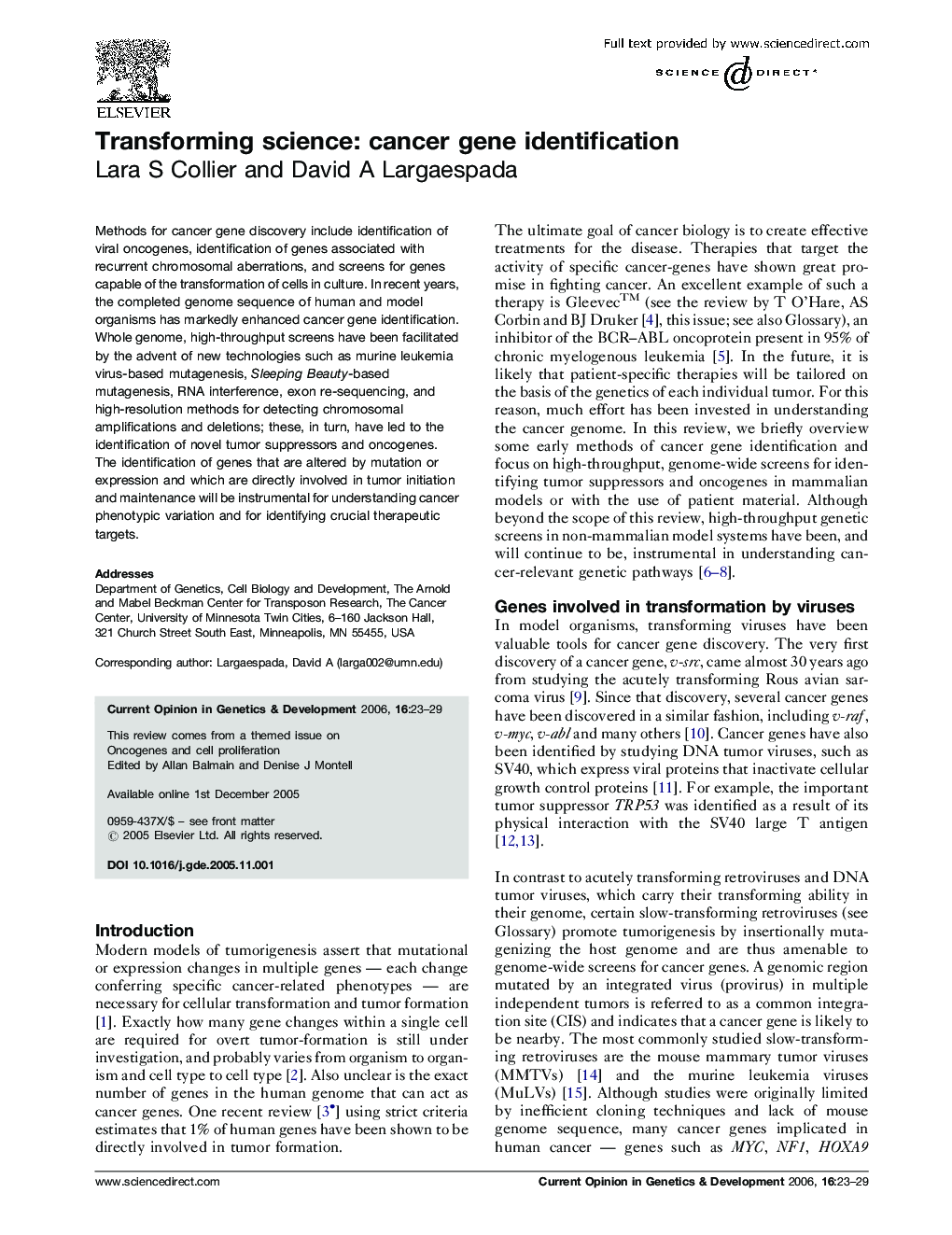| Article ID | Journal | Published Year | Pages | File Type |
|---|---|---|---|---|
| 2785496 | Current Opinion in Genetics & Development | 2006 | 7 Pages |
Methods for cancer gene discovery include identification of viral oncogenes, identification of genes associated with recurrent chromosomal aberrations, and screens for genes capable of the transformation of cells in culture. In recent years, the completed genome sequence of human and model organisms has markedly enhanced cancer gene identification. Whole genome, high-throughput screens have been facilitated by the advent of new technologies such as murine leukemia virus-based mutagenesis, Sleeping Beauty-based mutagenesis, RNA interference, exon re-sequencing, and high-resolution methods for detecting chromosomal amplifications and deletions; these, in turn, have led to the identification of novel tumor suppressors and oncogenes. The identification of genes that are altered by mutation or expression and which are directly involved in tumor initiation and maintenance will be instrumental for understanding cancer phenotypic variation and for identifying crucial therapeutic targets.
